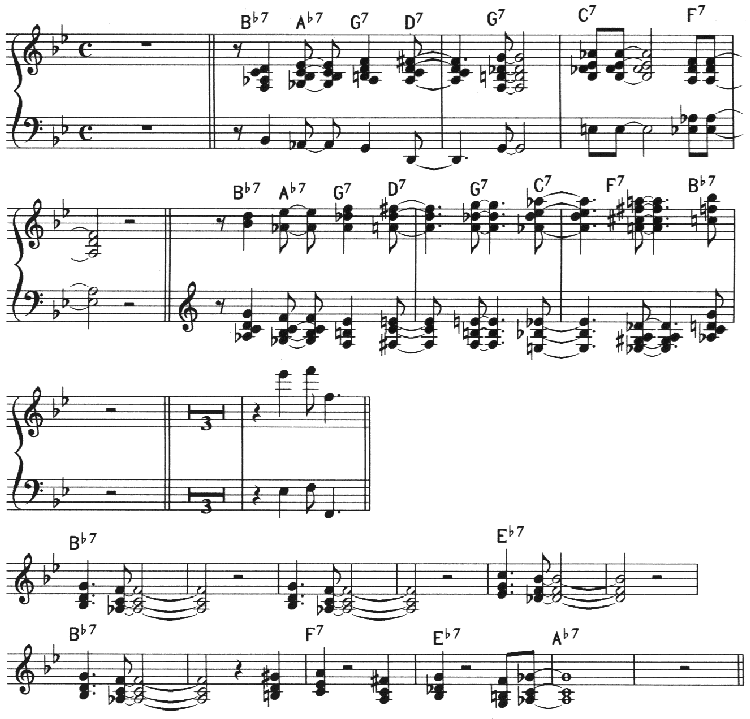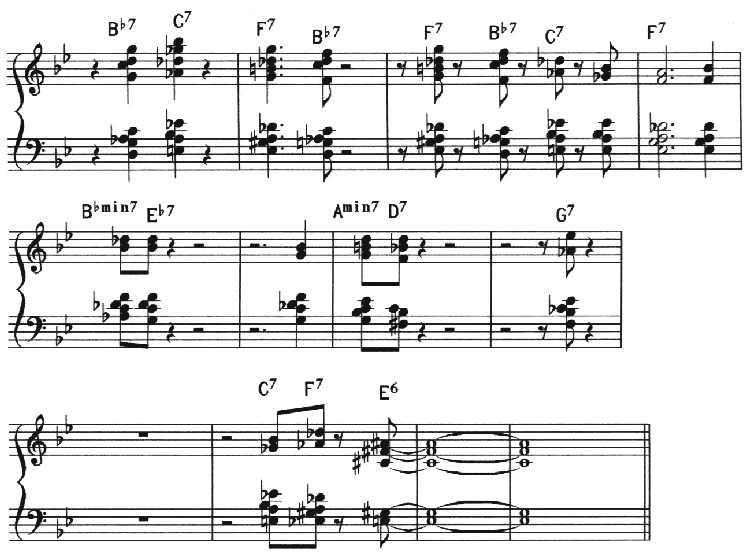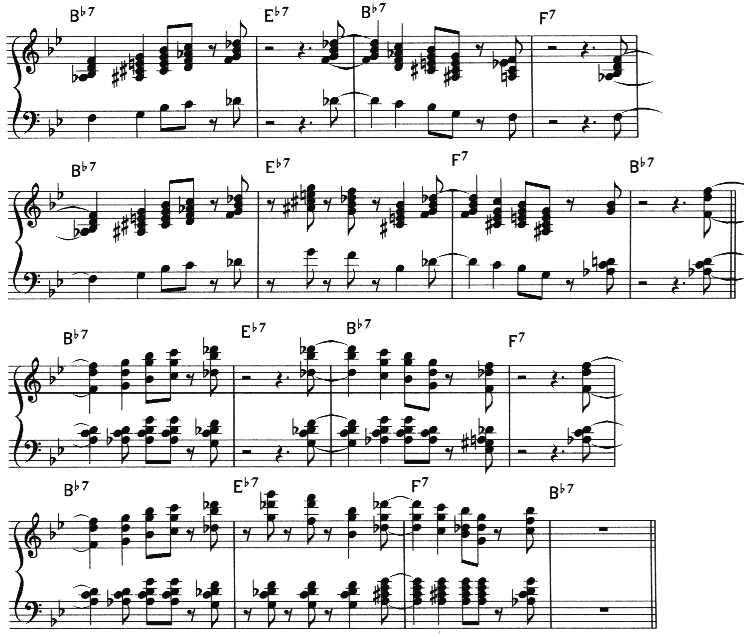| Transcriptions: Freddie the Freeloader | by Christiaan 'Niliov' van Hemert | ||||
|
The first transcription in our "Transcription-of-the-Week-Series" is the piano-arrangement of "Freddie the Freeloader" as played by the Ray Brown Trio, on their latest CD: "Live At Scullers". This piano-arrangement is played, of course, by Benny Green, the brilliant pianist of the famous trio. I transcribed the intro, the special and the outtro, no solos. Also, I left some (small) parts out, because I simply didn't like them. I have chosen this arrangement because it serves as an excellent example for the Jazzpiano-Voicing System. Let's start with the intro followed by the theme:  Be very precise with reading the music. It's easy to overlook a sharp or a flat, even for the experienced reader. The first four bars (I don't count the one bar rest at the beginning) are mostly block chord type voicings in which the doubling of the melody-note is omitted. In stead the left hand plays the root (I have not discussed block chords yet, but I will dedicate a page to this subject very soon). The last G7 C7 and F7 are "normal" voicings which can be derived from the voicing page. Note that the voicings are very small: the right hand only plays one or two notes, a possibility you might have overlooked studying the voicing system. The voicings starting form the fith bar are somewhat larger. Look for the triad voicings. All right, the special:  This a "classic" example of Ray Brown Trio specials. Note the extensive use of dissonant voicings which accomplishes the massive, big band-like sound. The last chord: E6/9 b5 is always a nice way to make a kind of "spacious" turn around in Bb. The Outtro: 
I the first eight bars Benny Green displays his excellent "block-chord-skills" (which even surpasses those of George Shearing). If you don't understand how block chords are built you'll have to wait untill I finished the webpage on this particular subject. The second eight bars have the same melody-line as the block-chords part but are voiced with octave voicings which all can be derived from the voicing system. Voicing melody-lines with octave voicings gives you a nice flowing bigband sound (à la Basie). Voicing melody lines with triad-voicings gives you a more full, but less flowing sound.
| |||||